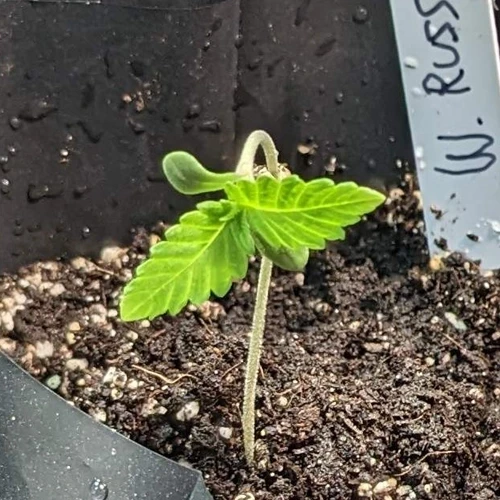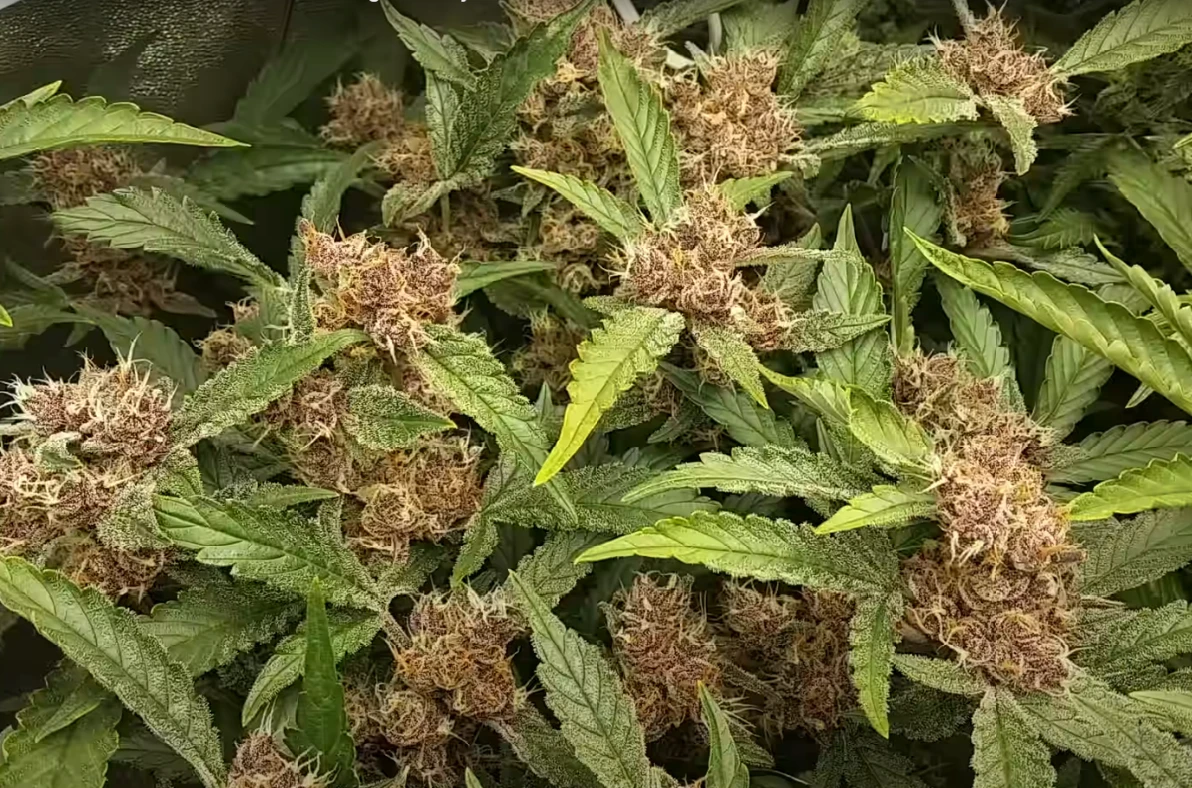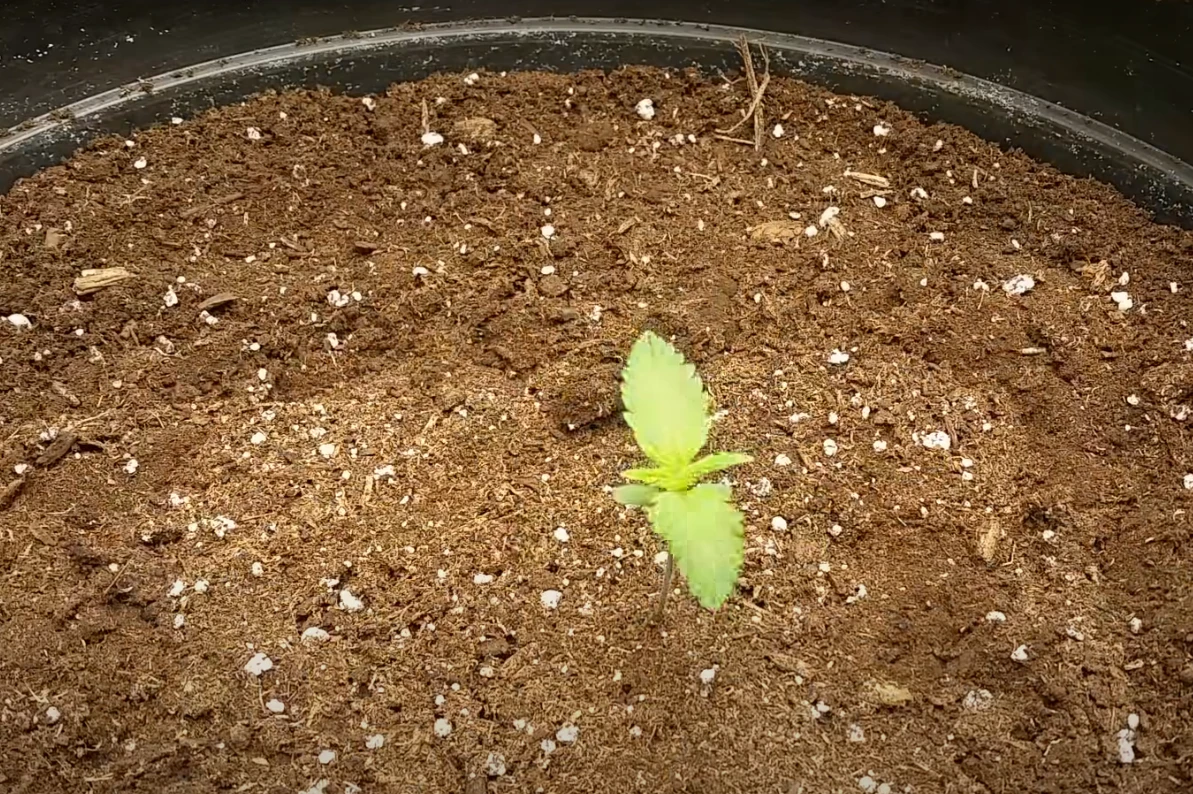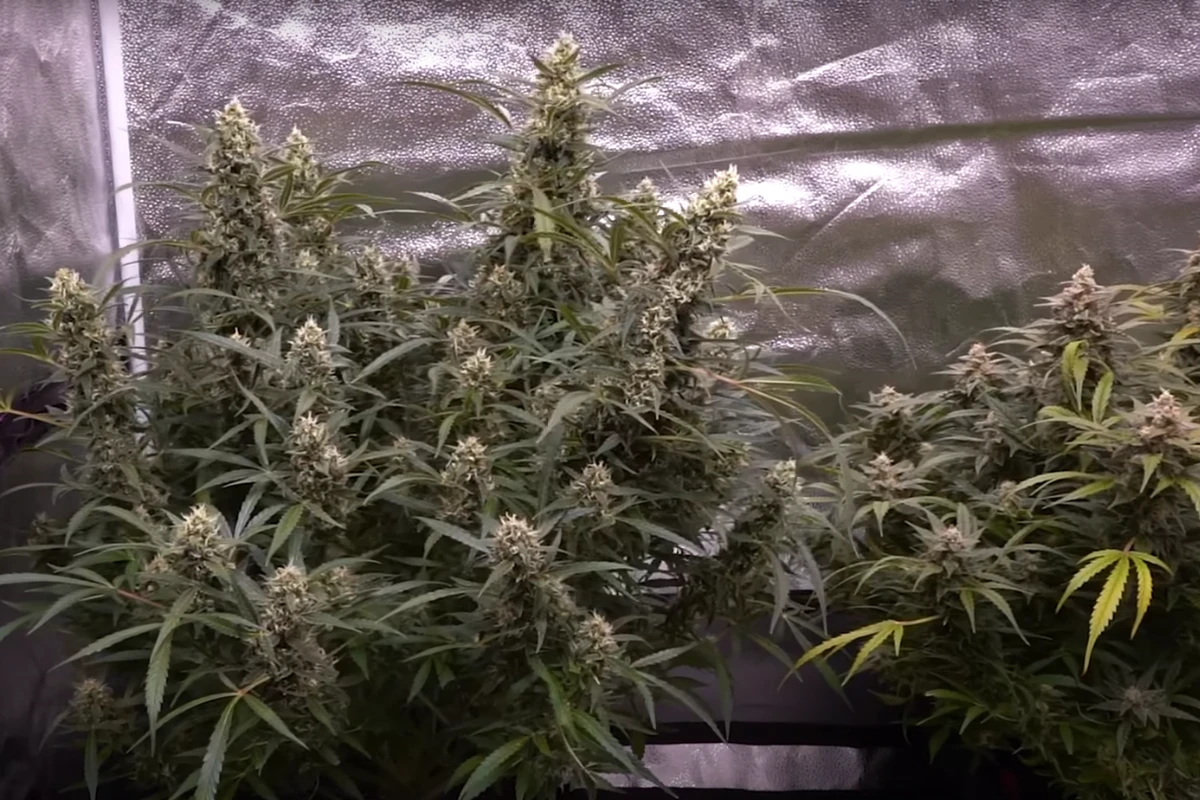What is the best soil to use for autoflower plants

I've been growing cannabis for years, and in that time, I've witnessed firsthand the rise of autoflowering strains. These aren't your grandma's cannabis plants; they operate on a different schedule, making life a lot easier for growers of all levels.
One question I often hear from both newbies and seasoned cultivators alike is, "What is the best soil to use for autoflower plants?". Trust me, your soil mix can be a game-changer for these rapid bloomers.
Understanding the Beauty of Autoflowering Cannabis Plants

Before we jump into the details of soil, let's get acquainted with autoflowers. Unlike traditional photoperiod strains that rely on changes in light cycles to trigger flowering, autoflowers march to the beat of their own drum.
Their genetics allow them to flower based on age, not light, making them a fantastic option for those new to cannabis cultivation. You can buy autoflower seeds at our store as well.
Autoflowers Simplify Growing: The Age Advantage
Imagine this: your plants transition from the vegetative stage to flowering on their own, without needing a shift in your light schedule. This eliminates the need for separate vegetative and flowering grow spaces, a huge plus for growers with limited space.
Their speedy growth cycle also means you can squeeze in multiple harvests yearly, a boon for those who like a constant supply.
Choosing the Right Foundation: Soil Selection is Crucial
Whether you're growing indoors or out in the elements, soil acts as the lifeline of your autoflowering plants. This living medium provides crucial nutrients, facilitates healthy root development, and dictates drainage; all factors influencing your grow operation's success.
Think of it like this: you wouldn't build a house on a shaky foundation, would you? A proper soil mixture is especially important when growing autoflowers in colder climates.
What Makes Good Soil for Autoflowers? Deciphering the Magic Formula
Now, for the million-dollar question: what is the best soil to use for autoflower plants? The answer boils down to a perfect blend of drainage, nutrient content, and pH level. These three components create a balanced environment that allows your plants to thrive.
Get the recipe wrong, and you risk stunting growth, jeopardizing yield, and even inviting pests or diseases. It's all about that delicate equilibrium.
Drainage: Avoid the Dreaded Drowning - Good Drainage is Essential.
Autoflowers are fast-growing by nature, and their roots need to breathe to keep up with this accelerated development. Soil that holds excessive water can choke roots, depriving them of vital oxygen. The consequences? Root rot, fungal infections, and a whole host of headaches you don't want to deal with.
Look for soil mixes that are airy and drain well. Incorporating ingredients like perlite, vermicast, or coco coir can help enhance drainage and create that air-filled environment your roots will thank you for.
Coco coir is an especially great choice if you tend to overwater your plants.
Nutrient Content: Feeding Frenzy - Keep Those Buds Happy
From seedling to harvest, autoflowers need a steady supply of nutrients to power their rapid growth and generous bud production. The "Big Three" nutrients – Nitrogen (N), Phosphorus (P), and Potassium (K) – are absolutely critical.
Nitrogen fuels leafy growth during the vegetative stage, while phosphorus and potassium come to the forefront during flowering, encouraging big, resinous buds. Using the right nutrients can even help you grow purple autoflowers.
Here's where things get tricky. Autoflowers are notorious for their sensitivity to nutrient burn, especially early on. That's why a "less is more" approach to feeding often works best. You're shooting for a slow and steady nutrient release to keep your plants happily chugging along without overdoing it.
pH Matters: Strike the Perfect Balance - pH Balance is Key
Imagine pH as the gatekeeper to nutrient absorption. If the pH is off, your plants simply can't access the food they need, no matter how much fertilizer you throw at them. Maintaining the correct pH level ensures your plants can efficiently uptake those precious nutrients. The sweet spot for autoflowers in soil is typically between 6.0 and 7.0.
Crafting the Ultimate Soil Blend: Organic Goodness for the Win.
In my experience, the best soil for autoflower cannabis isn’t just about what’s in it but where those ingredients come from. High-quality organic components are the backbone of a vibrant and healthy root zone.
I’ve found that sticking with organic materials, like worm castings, compost, and bat guano, translates to happier plants with better flavor.
This approach also minimizes the risk of chemical residues ending up in your final product. Trust me, it makes a difference. You can also experiment at first by choosing cheap autoflower seeds from our collection.
The Autoflower Soil Showdown: Unveiling My Top Choices

With so many options on the market, choosing the right soil mix for your autoflowering beauties can be overwhelming. To simplify things, let's take a look at my top recommendations:
1. Coco Coir: Embrace the Power of Coconut Husks
Coco coir, derived from the fibrous husks of coconuts, is a fantastic choice for cannabis growers seeking optimal drainage and aeration. Its pH-neutral properties and ability to retain water and nutrients make it ideal for creating a balanced environment for oxygen-hungry roots.
Think of it as a sponge that holds moisture while allowing excess water to drain, preventing issues like root rot and overwatering. Unlike peat moss, which is harvested from sensitive ecosystems, coco coir is a sustainable byproduct of the coconut industry, making it an eco-friendly alternative.
It’s also highly resistant to compaction, ensuring your roots have room to stretch and breathe. That said, coco coir contains minimal nutrients, so it’s essential to supplement with a coco-specific nutrient solution to meet your plants' needs.
While it may require a bit more effort, this versatile growing medium rewards growers with healthier, more vigorous plants. For more information on soil and nutrients, read our autoflower nutrients tips and guide article.
2. High-Quality Potting Soil: The Convenient Option
Pressed for time or energy? Pre-mixed potting soil formulated for cannabis is a convenient, high-quality option, especially for beginners. These soils come with a balanced nutrient profile and additives like perlite, vermiculite, and coco coir to improve drainage, aeration, and water retention.
Some premium mixes even include mycorrhizal fungi to enhance nutrient absorption. Keep in mind that nutrient content varies by brand, so read labels carefully and adjust your feeding schedule as needed.
Starting with smaller amounts of soil and increasing gradually can also help avoid overloading your plants with nutrients.
3. The Perfect Blend: Customized Mix for the Discerning Grower
If you're feeling adventurous and enjoy getting your hands dirty (literally), crafting a customized soil mix tailored to your specific environment and the needs of your autoflowering strain can be a rewarding endeavor. Start with a high-quality base soil and then personalize it with amendments like:
Perlite: This volcanic glass helps to improve drainage and aeration, preventing waterlogged soil and promoting healthy root growth. It's also incredibly lightweight, making it easy to work with.
Vermiculite: Similar to perlite, vermiculite improves soil structure and moisture retention. It also contains trace amounts of beneficial minerals like potassium and magnesium.
Compost: Homemade or store-bought, compost is an excellent way to introduce beneficial microorganisms and slow-release nutrients to your soil mix. It also helps to improve soil structure and water retention.
Worm Castings: Often referred to as "black gold," worm castings are the nutrient-rich byproduct of earthworm digestion. They contain a wide array of essential plant nutrients and beneficial microbes that help to promote vigorous growth and disease resistance.
When creating your own soil mix, it's important to start with a solid foundation. Look for a high-quality base soil that contains a blend of organic matter, like peat moss or coco coir, and inorganic components like perlite or vermiculite. From there, you can add in your chosen amendments at a ratio of roughly 1 part amendment to 3-4 parts base soil.
Transplanting Autoflowers Like a Pro: Mastering the Gentle Art

Here's the thing about autoflowers: they have a much shorter vegetative stage compared to their photoperiod counterparts, which makes transplanting them a little more delicate. Since they’ve got less time to recover from transplant shock, timing is everything.
Ideally, you want to start your seeds directly in their final container filled with your chosen soil mixture. This minimizes the need to disturb their roots later on.
If transplanting is unavoidable, choose a slightly larger pot, around 3-5 gallons, and make the move when your seedlings have developed 2-4 true leaves.
The key is to handle them with care, minimizing any disruption to their fragile root system. This sets the stage for happy, stress-free growth right from the get-go.
Watering and Feeding: Don't Overdo It - A Gentle Touch is Best
Remember, autoflowers are like finely-tuned sports cars; they need just the right amount of fuel to perform their best. With their rapid growth, they can be quite thirsty, but too much water can lead to those dreaded drainage issues and stunted growth.
Aim to water your autoflowers when the topsoil is dry to the touch, using a gentle, even pour. You’re aiming for a consistently moist, not waterlogged, growing medium. Letting the pots dry out completely between watering can stress your plants.
Keeping an Eye on Things: Monitoring Soil Health for Peak Performance
Throughout your autoflowering journey, it’s crucial to regularly check your soil’s health and make adjustments as needed. Just like us, our plants rely on a balanced diet and environment to thrive. Keep an eye out for potential issues, and learn how to address them:
pH Imbalances: Use a soil pH tester to monitor your pH levels regularly, aiming for a range between 6.0 and 7.0.
Nutrient Deficiencies: Watch out for signs like discolored leaves or stunted growth, which could indicate a nutrient deficiency.
Soil Compaction: This occurs when soil becomes dense and compacted, hindering drainage and root development. You can usually avoid this by adding aeration materials like perlite to your soil.
Conclusion
So, there you have it – my take on what is the best soil to use for autoflower plants. Remember, a thriving cannabis garden starts from the ground up. Selecting the right soil sets the stage for vigorous growth, bountiful yields, and a truly rewarding cultivation experience.
Don't underestimate the importance of this crucial step.
Experiment with different mixes, find what works best for your plants and your setup, and most importantly, enjoy the journey.
Q: What is the importance of using the right soil mix for autoflowering cannabis?
A: Choosing the correct soil mix is crucial as it provides the necessary nutrients and conditions for the plant to thrive and maximize yields.
Q: How does super soil benefit autoflowering cannabis plants?
A: Super soil is enriched with organic nutrients and beneficial microbes, promoting healthy plant growth and enhancing overall yield.
Q: What are the key features of organic soil for growing autoflowers?
A: Organic soil contains natural ingredients such as organic matter and microbial life, creating a fertile environment for autoflowering cannabis to flourish.
Q: Why is it important to improve soil quality for growing autoflowering cannabis?
A: Enhancing soil quality ensures that the plants receive essential nutrients, water retention, and proper aeration, leading to healthier and more productive growth.
Q: What defines the best soil for growing autoflowering cannabis?
A: The best soil for autoflowers provides a balanced mix of nutrients, organic matter, and water-holding capacity, tailored to the specific needs of these plants.
Q: How can I create a soil recipe for growing autoflowering cannabis?
A: You can formulate a soil recipe by combining components like organic soil, bone meal, and microbial enhancers to create a nutrient-rich medium for optimal plant growth.
Q: What are autoflower seeds, and why are they preferred for cultivating autoflowering cannabis?
A: Autoflower seeds are genetics that automatically flower based on age rather than light cycle, making them easier to grow and ideal for beginners or those looking for quick harvests.
Q: What role does soil quality play during the flowering stage of autoflowering cannabis?
A: High-quality soil with proper nutrients and water retention is vital during the flowering stage as it supports robust bud development and maximizes flower production.

